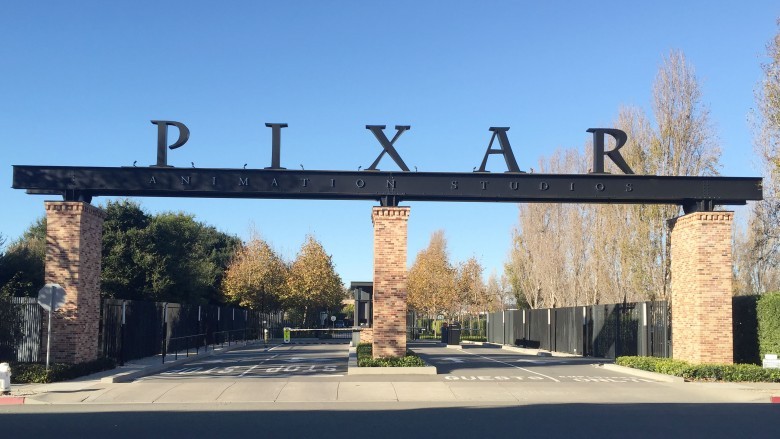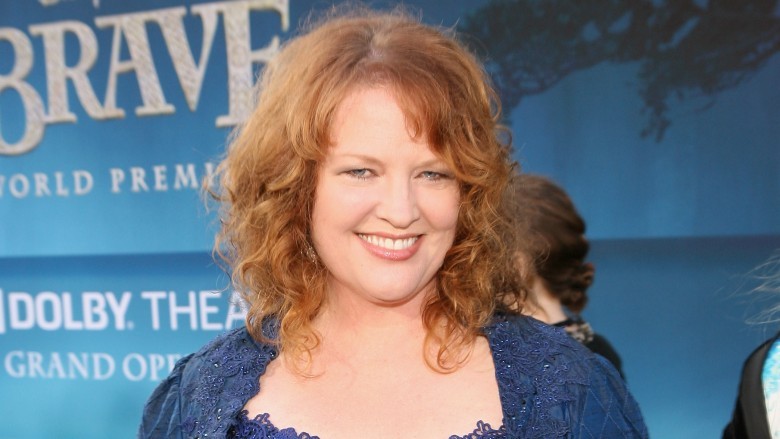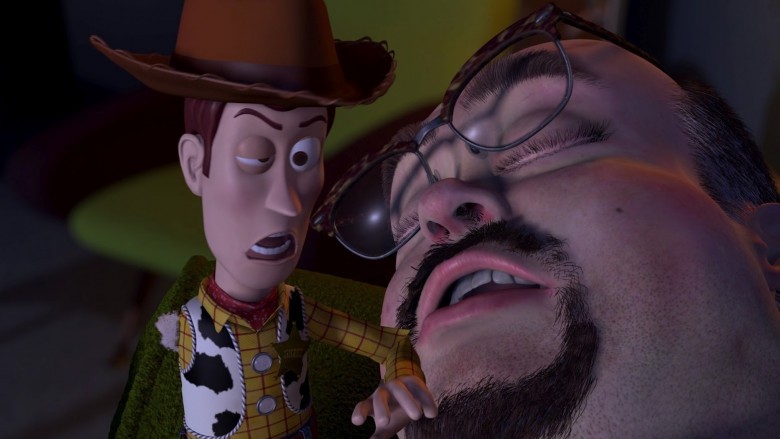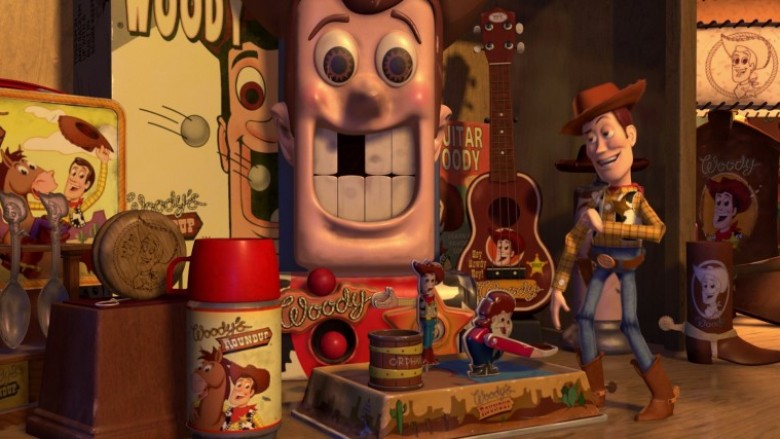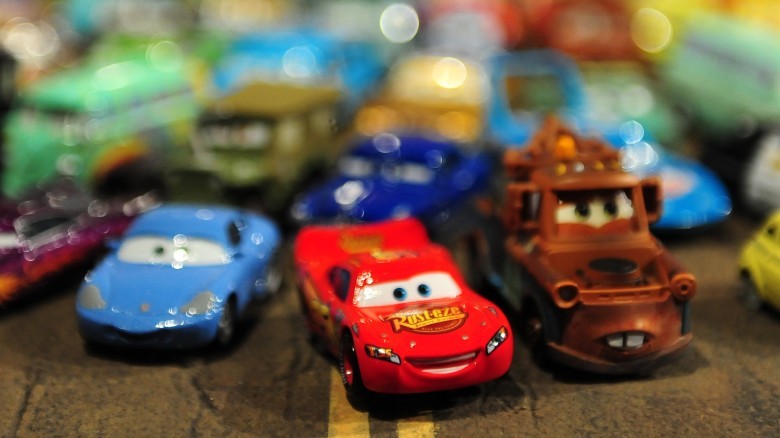Secrets Pixar Doesn't Want You To Know
Pixar rocketed into the public consciousness in 1995 with the ground-breaking Toy Story. Fueled by the critical and commercial success of their first foray, they followed Story up with a further 16 feature films. Perhaps as a result of their soft and fluffy, family-friendly product, Pixar has acquired an admirably clean reputation. But behind those happy-go-lucky, hopping lamp shenanigans, there lie a few secrets they would prefer you didn't know about.
They have a problem with women
Animation seemed to turn a page when Pixar burst onto the scene, and it wasn't just the flashy computer processing making that happen — the stories seemed like a breath of fresh air after so many years of the same old save-the-princess, gender-stereotyping pap. But just because Pixar looks better than what we had before, doesn't mean everything has changed. Because while they look like they made a great leap forward in some areas, when it comes to their attitude toward women, it might better be described as a short shuffle.
Take, for example, the Bechdel test, an informal test that establishes whether a movie or TV show meets a very basic level of gender "equality." All a movie has to do to pass is have one scene in which two named female characters have a conversation that isn't about a man. As of 2016, only 7 of their 17 feature length movies pass this (incredibly basic, remember) test. That's not even half.
One of the movies that did pass was Brave, but considering the lead character was a girl, that really shouldn't be a surprise. Unfortunately, while the onscreen action might have made it over the low Bechdel bar, the behind-the-scenes action definitely didn't. The first Pixar movie that has a woman as a lead character was also the first Pixar movie to have a female director ... at least, for awhile. That's because, although Brenda Chapman wrote the movie and saw it through the early stages of development, Pixar ultimately balked on her, and replaced her with a man. The official reason given for her departure was "creative differences," and while there may be some truth there, there's more truth to how Brave was Chapman's idea from the beginning (the story is even based on her relationship with her daughter) but when it came down to it, her plans weren't shared by the studio, and so she was replaced.
The irony of it all is that Pixar made no small fuss about choosing a woman to direct Brave and, despite kicking her out, ended up making pretty much the same movie she had planned to make all along, just with a whole lot more bad press than they ever expected. A least they were brave enough to put her name in the credits. Just like we were brave enough to make that pun. We're not sorry.
They have a history of wage fixing
If you pay peanuts, you get monkeys, or so the familiar idiom would have you believe. It's also true, unless you're Pixar. Because despite having a string of super-successful movies, the bosses at Pixar decided it would be too expensive to pay their class-leading digital animators what they are worth. Instead, they illegally conspired with Lucasfilm, Dreamworks, Walt Disney Animation Studios, and several others to keep wages low by not headhunting each others' employees, thus denying thousands of computer specialists the opportunity to look for career (and wage) enhancement elsewhere.
After Sony entered the business in 2002 with Sony Pictures Animation, they either didn't hear about the agreement or didn't care, as they quickly started recruiting animators from Pixar. In return, senior Pixar executive Ed Catmull tried to recruit Sony — to their credit, Sony refused. Catmull's response to Sony's totally legal and 100% ethical rejection was to try and encourage the illegal cartel to punish Sony, by aggressively recruiting their employees.
This all came to light after a U.S. Department of Justice antitrust investigation in 2010 inspired a class-action lawsuit. But considering that the lawsuit was settled by Pixar for a measly $9 million, despite the fact that the cartel's actions affected thousands of employees across the industry, it wouldn't be a surprise if a few less-than-family-friendly Easter eggs start turning up in the background of future releases.
They almost lost Toy Story 2 to a bad backup
Digital files are pretty insubstantial if you think about about it, existing as just so much electrical noise on a magnetic disk. Because of that, it's pretty easy to lose something, whether through accident, misunderstanding, or Act of God. Losing a file is pretty annoying when it's something you've spent half a day on, but when it's the files of an incomplete animated movie that represents thousands of hours of work — and huge sums of money to boot — "pretty annoying" doesn't even come close to being the right description.
Back in the late '90s, when Toy Story 2 was in production, someone entered a small-but-significant command in the wrong place of Pixar's computer system. Despite the rapid actions of some senior people, who just happened to be looking at some of the files when they started to disappear, around 90% of the files were deleted from the main server before the process could be stopped.
"That's not such a big deal, because they naturally had backups. But after a week of trying to recreate the files from the backups, it was eventually realized that the backup system was flawed, and the files were full of errors. Luckily, one of the technical directors had recently been on maternity leave, and to enable her to work from home, she had a recent copy of the files stored there. With that file, the more recent-but-corrupted backup, a random collection of the animators' personal backups, and not much sleep at all, the team was able to almost completely rebuild the movie.
But that's a happy ending you didn't see in the theaters, literally. Because less than a year before the movie was scheduled to be released, the studio decided to throw out almost the whole movie and start again from scratch. That they made the deadline is considered by many at the company as a victory, and an example of the team's dedication. But that the company would make a decision that resulted in employees working "hundred-hour weeks ... for 9 months in a row" is an example of something else entirely, and nothing good.
The production demands of Toy Story 2 almost cost a child his life
The release of Toy Story 2 would mark a turning point for Pixar in the way it handled its employees because, apart from the fact that accidents and late rewrites forced employees to work inhuman (and extremely antisocial) hours for long periods of time, it also had other, more serious side effects.
For one, the long hours of computer work day after day, and month after month, resulted in a third of the animators suffering from repetitive stress injuries and carpal tunnel syndrome. But that's far from the worst thing that happened. His mind clouded by fatigue from working extreme hours, one employee forgot that he was supposed to take his son to daycare and drove straight to work. It wasn't that he left his kid at home — he left the child in the back of the car in the Pixar parking lot. Fortunately the father remembered just in time and the child survived its ordeal — also, to its credit, Pixar's cruel, whip-cracking approach to its employees didn't.
The mediocre Cars franchise is only kept alive for the money
Movie franchises are all the rage, and have been for awhile. Making a sequel for an already successful movie is a much safer bet than trying something completely new, and Pixar knows it, but box office receipts aren't the only measure of a movie's success.
Take Toy Story 3. Despite it being the box office hit of the Pixar stable, grossing over $1 billion worldwide, it wasn't Pixar's most successful effort by another metric, and that metric is merchandising. Toy Story 3 made $2.8 billion in merchandising sales, and topped that all off with a couple of Academy Awards. Cars, meanwhile, which made just under $500 million at the box office and failed to win any Academy Awards, raked in an incredible $10 billion in merchandising sales, so it's no surprise Pixar decided to try again with Cars 2.
Despite that sequel being the closest thing to a flop Pixar has ever had — receiving no award nominations, a dismal 39% on Rotten Tomatoes, and making barely more money than the original against a bigger budget, it nevertheless provided the inspiration for untold millions of children to ask nicely, beg, and no doubt scream for their parents to buy them one (OK, fine, dozens) of the many Cars toys that hit shelves in time for Cars 2's 2011 theatrical release. And you know that's why Pixar keeps this franchise going, because why else would Pixar be releasing a third Cars movie in 2017? It's not because we're just that emotionally attached to Mater.
